These enigmatic objects are made in a number of variations.
Opening them can be very simple, if you know the exact sequence of movements required to do so. If not, the process can opposingly be very frustrating.
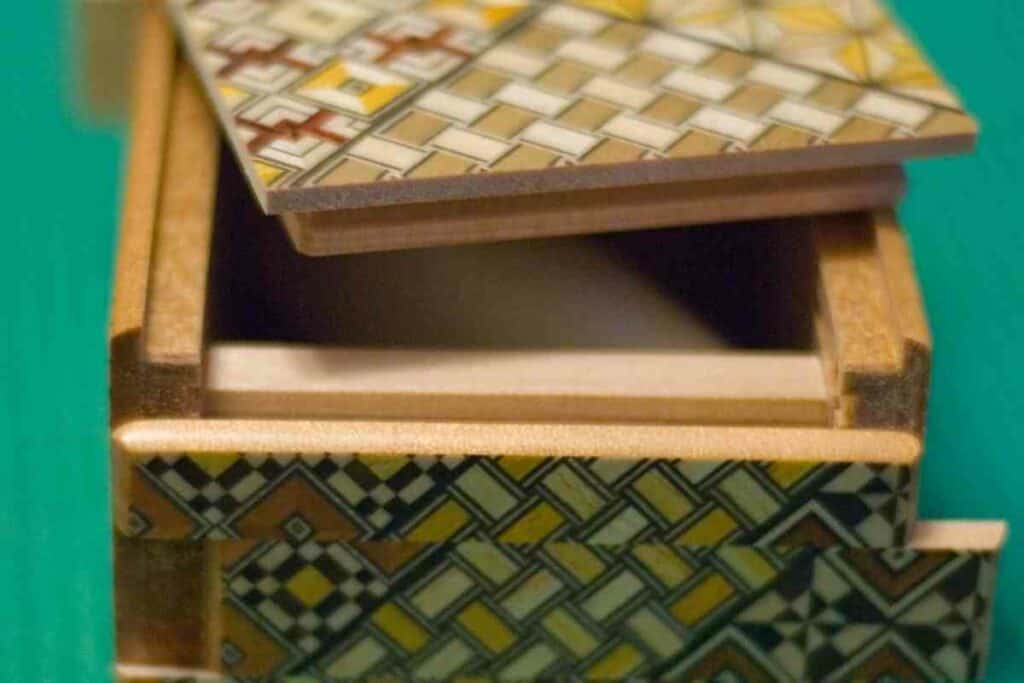
Technically, the only person who knows how to open one, is the craftsman who created it and those with whom that person chose to share the knowledge.
Without this knowledge, each box is an individual mystery; giving credence to its many pseudonyms. Reasonable deduction is the only way to solve them…
In This Article – We will look at the common methods of opening a Japanese puzzle box, briefly explaining what they are, and focusing on the Himitsu-Bako – a traditional, wooden, Japanese puzzle box.
Table of Contents
What Is a Japanese Puzzle Box?
[lasso type=”table” id=”74″ link_id=”8637″]
Considered by some to be a toy, the Japanese puzzle box is just that: a puzzle.
Made in many sizes, most commonly they are crafted in a similar size to a Rubix Cube. Something that fits neatly in the palm of your hand.
Read next – Japanese Rubik’s Cubes
They are most often made from wood and designed in varying degrees of complexity.
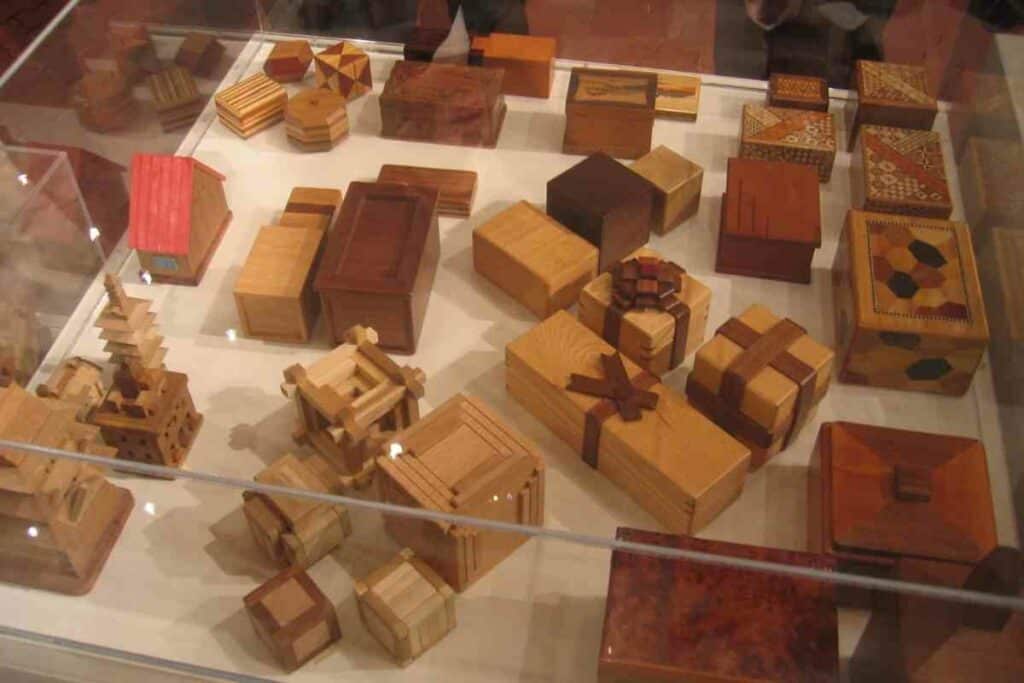
Each box is individually encoded with a specific sequence of movements needed to crack it open and reveal the hidden chamber inside.
Some take just one movement of a specific piece to open, others are crafted with puzzles on multiple surfaces with many sequential moves to make.
What does a traditional Japanese puzzle box look like?
Always made from the woods of local trees to Japan, Himitsu-Bako is a tradition which has been passed down from one generation to the next.
Gaining a level of prominence in the famous Edo period of Japan’s history, boxes were combined with a form of Japanese puzzle called ‘Yosegi-zaiku’.
These geometric patters give Himitsu-Bako their unique and artful designs.
It is a type of art similar to that of Greek mosaics but with small pieces, strips, or slats of wood which are glued together and sanded to a smooth finish.
Japanese designs are stunningly intricate and instantly recognisable.
What is the Japanese Puzzle Box Used For?
Centuries old, this wooden secret container was once used by the Samurai to conceal communications in great battles; as well as fisherman to keep their dangerous hooks inside.
Additionally, it was used generally in the Japanese home, in order to keep infants safe from small, sharp objects like sewing equipment.
Generally used to keep small items safe and secure, a puzzle box can be both useful and entertaining.
Frequently designed with intricate geometric patterns and varnished to a stunning finish, they are also very widely used as decorative ornaments in people’s homes.
Jewelry boxes are a common form.
Nowadays – They are even made commercially as an entertainment piece which keep people of all ages occupied for hours.
How Do You Open a Japanese Puzzle Box?
That’s not such an easy question to answer.
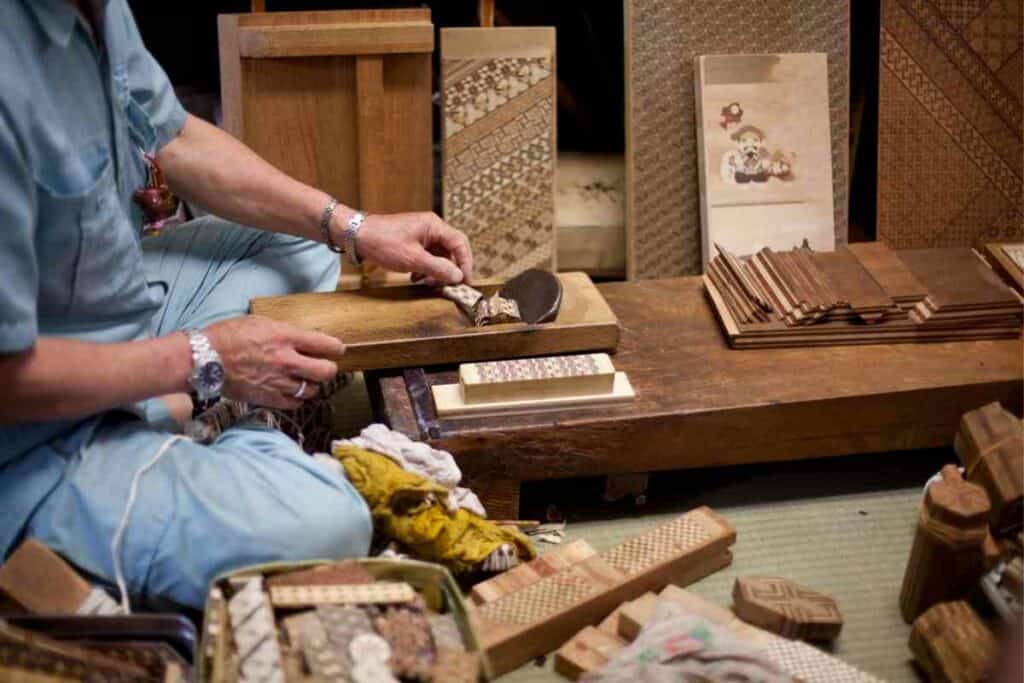
Opening a puzzle box very much depends on the box that you have in your hands.
The most common method of opening a Japanese puzzle box is to slide the surfaces, or parts of them.
Many are constructed with moving parts which, when moved correctly, open the box.
Instead of using a specific example, we will discuss the possible steps and cover 3 of the main types, including Himitsu-Bako.
How many moves/steps does a puzzle box take to open?
Often the boxes can be opened with a sequence of between 2 and 4 steps to take.
A lot, however, are crafted with anywhere between 5 and 100 moves to make, depending on the size of the box that you have.
Competitive pieces have even had up to and over a record-breaking 1500 individual moving parts!
Some are so intricately designed that they will have more than one covert compartment; they will have drawers as well as multiple small chambers to reveal.
Many collector pieces now also exist which are worth over a thousand dollars to buy.
Opening a simple Japanese puzzle box
In amongst the genius marquetry, geometric patterns of a traditional Japanese puzzle box, there is always one move to make first.
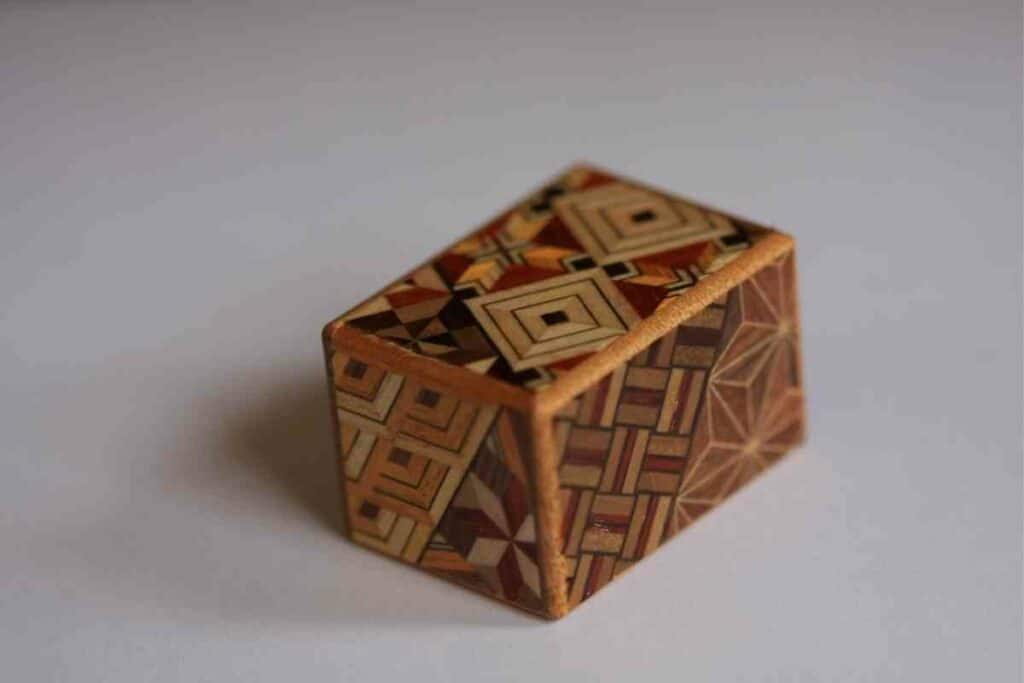
Either a full or partial panel will slide out of alignment.
The panels can move in any standard direction.
Partial panels could be rectangular or even triangular, corner panels which slide outward, sometimes in a diagonal direction.
Many simpler boxes will have one or two movements like this. Some will have a small button to push in, others will have a removable part to take out.
Opening a multistep Japanese puzzle box (Himitsu-Bako)
Traditional Japanese puzzle boxes will always appear similar with their geometric patterns.
Finding the first movable piece is literally a process of elimination but is also, quite often, the most difficult part of the puzzling process.
Once you find the first move, it will lead logically to the next.
The movement of the first piece often allows for the movement of the next.
Effectively, making the first move, successfully, removes an obstacle to the next move and then the next and so on.
These items are made with incredible precision so, if you get stuck, return to the last piece and ensure it has moved all the way.
What to Expect? Often, you will hear a click, what some refer to as a satisfying snap, with each move until the box is completely solved.
Opening a modern Japanese puzzle box
Some of these Japanese puzzle boxes are not so traditional and have been manufactured and mass produced.
One very common style is one with externally fitted, moveable or removable pieces.
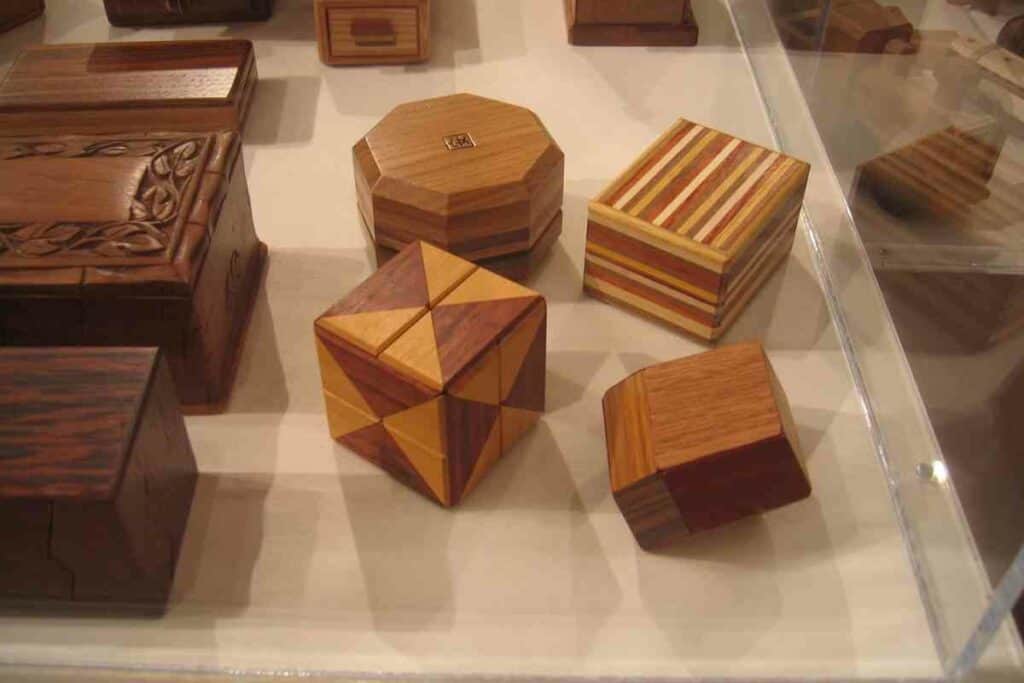
These can be sliding bars or pieces which pop out as a result of the previous move.
First, try sliding any externally attached pieces, before sliding any surface.
Essentially, you work from the outside, inward, again: via a process of elimination.
Thanks to the vast wealth of knowledge now available, at our fingertips, there are also a number of demonstrative videos which feature specific examples of boxes and their step-by-step sequences.
Should you get stuck, these might be the way to go.
Final Thoughts
The only way to answer this rather vague question, is to provide the unavoidably vague and generalised answer above, however ironically this reflects the same sense of enigma surrounding its subject.
As cryptic as it seems, what you need to open any Japanese puzzle box is specific instructions from whomever made it.
Without the exact knowledge, there is only so much that you can do.
However, hope is not lost.
Even without the knowledge, all that you really need is some back ground knowledge of the Himitsu-Bako tradition, the power of logical deduction, and, of course, some time and a level of patience.
In Case You Missed It
- The Forbidden Japanese Island That Will Give You Nightmares
- Miss Japan Forced to Wear Sailor Moon Costume Since Childhood: Claims It’s the Secret to Her Success
- Essential Guide to Japan VPN: Secure Access and Privacy for Travelers
- Sumo Wrestler Suit for Adults by TOLOCO: Best Sumo Suit?
- Eki Stamp Book (Gotta Collect Them All!)
- Explore the Fascinating World of Japanese Rubik’s Cubes









